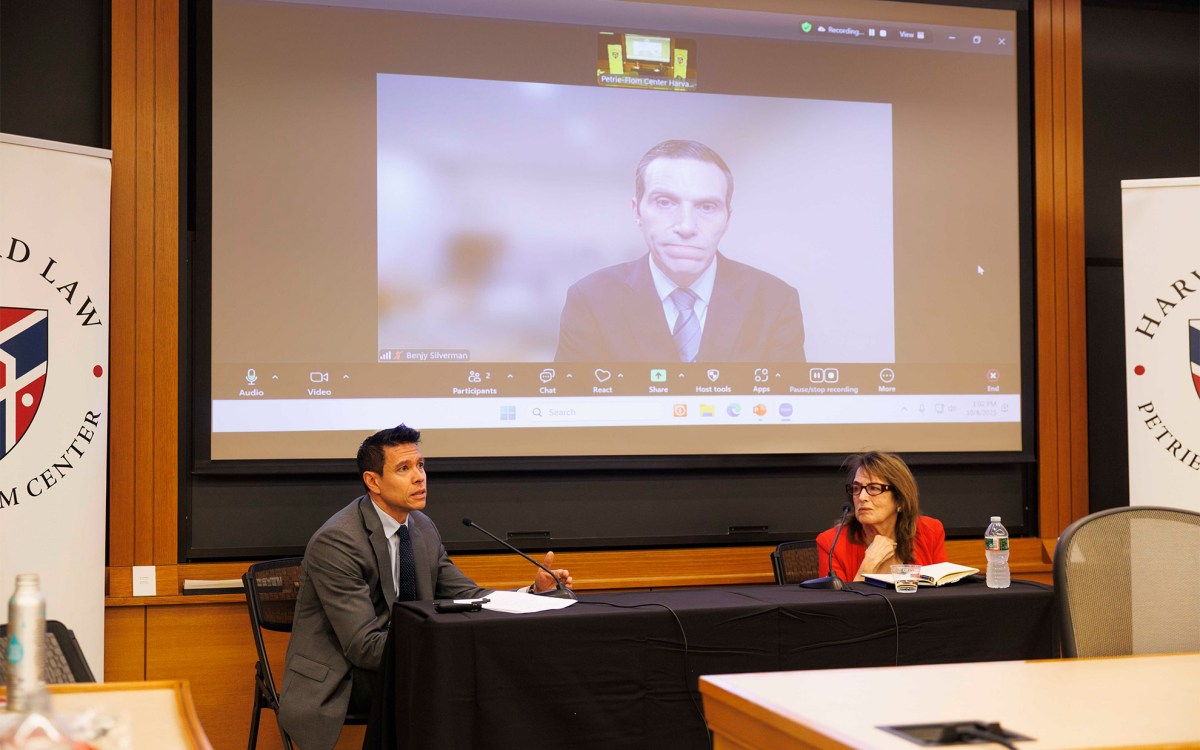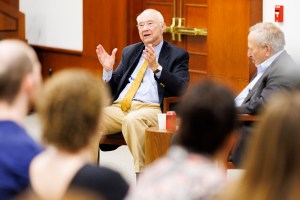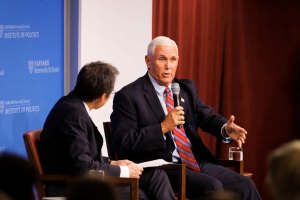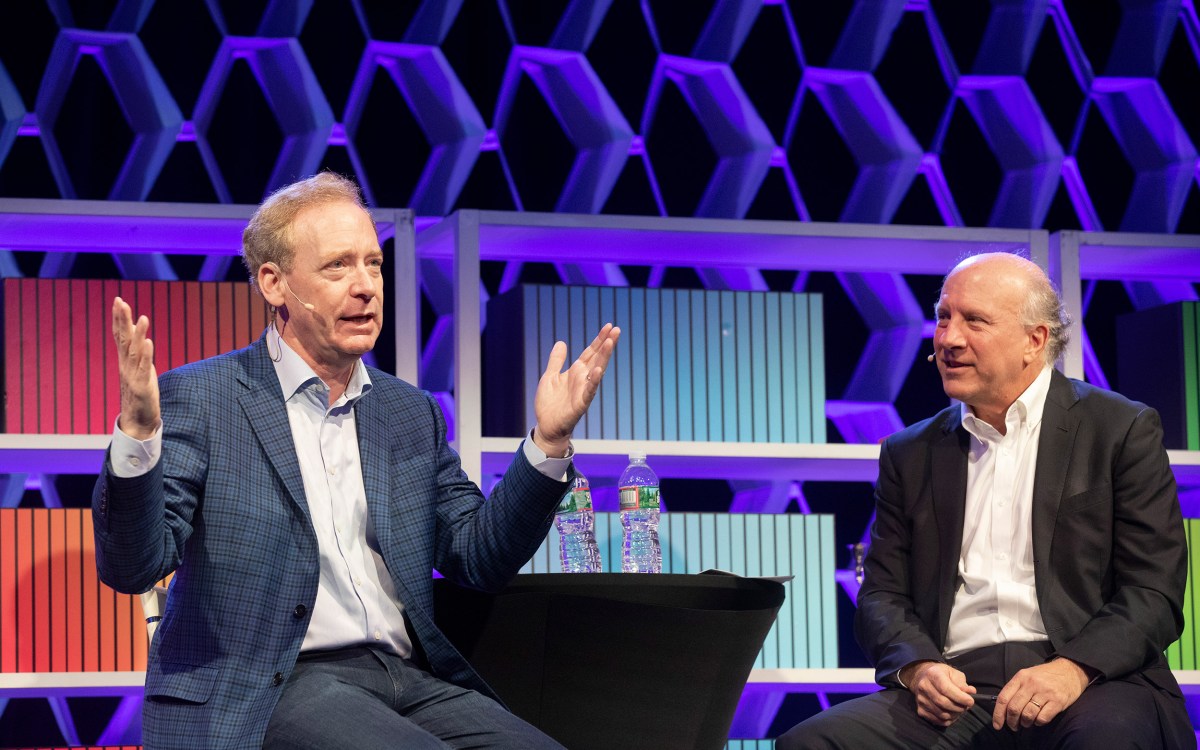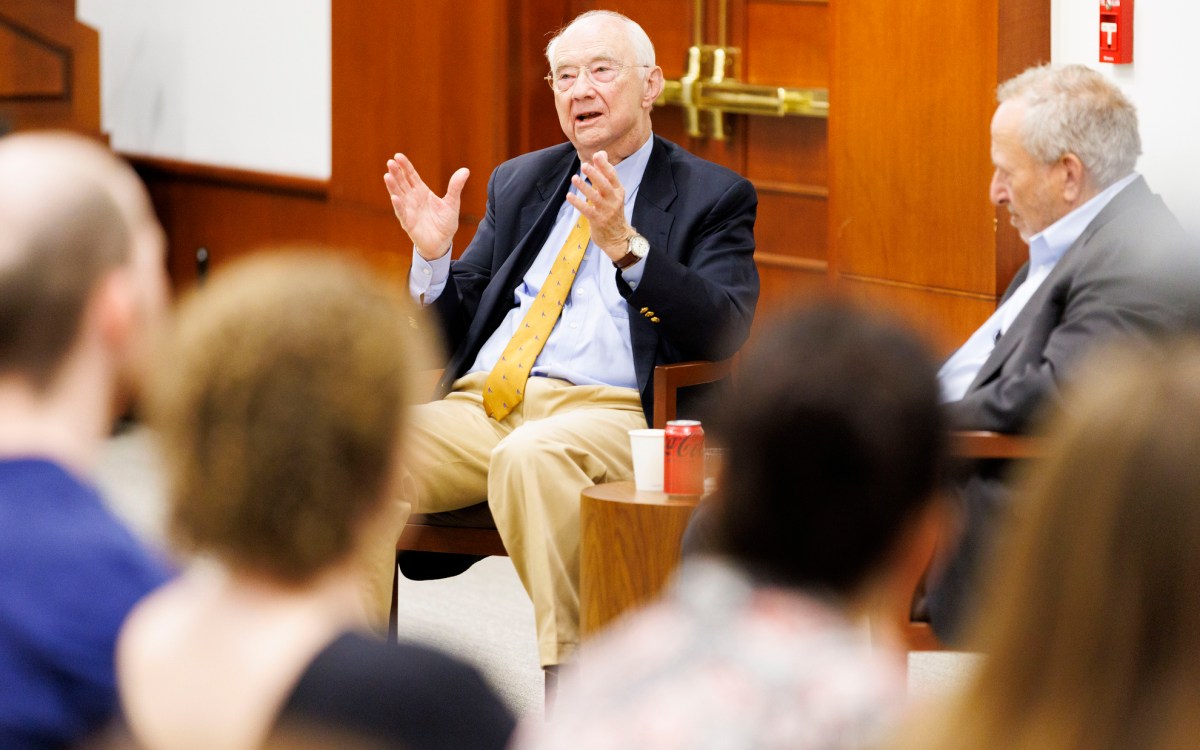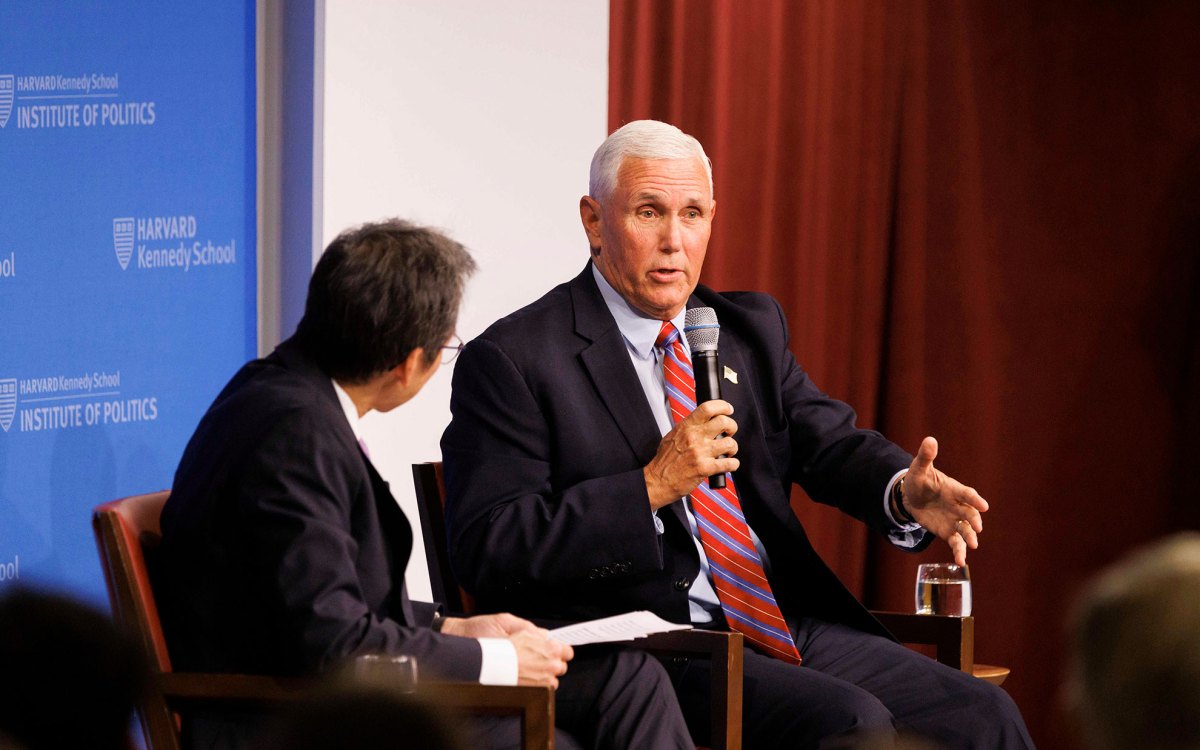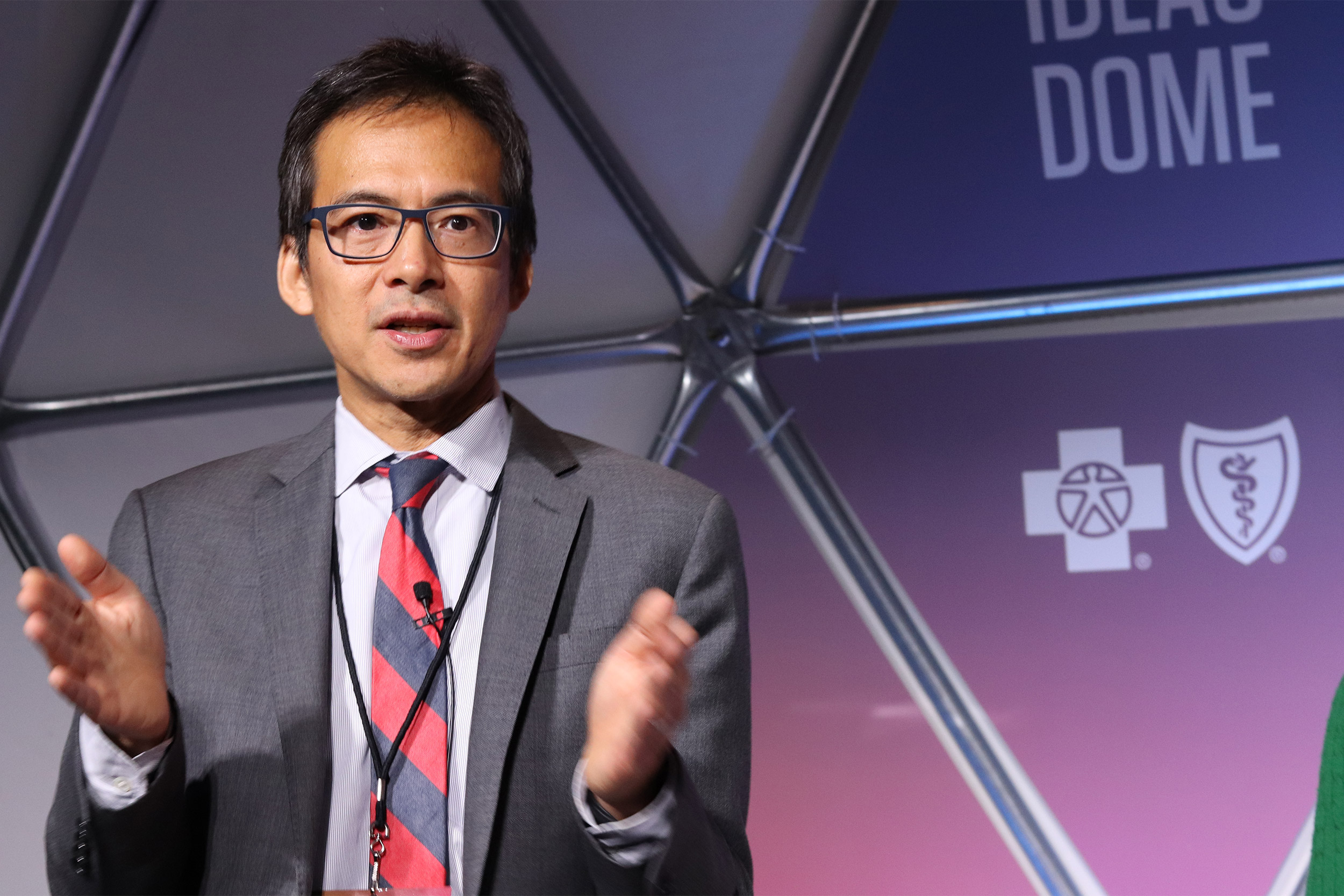
“What if 80 percent of the adults in America actually voted? What would that be like and how could we get there?” asked Archon Fung of the Harvard Kennedy School.
Sarah Grucza/Ash Center
Turn voting into a celebration, not a chore
Panel examines ways to challenge civic culture, increase turnout
Just 56 percent of eligible American voters in cast ballots for president in the 2016 election, and nearly two-thirds remained on the sidelines in the 2014 midterms.
With the November election approaching, a Harvard panel on Friday cited those and other statistics to highlight how low voter turnout remains a stubborn challenge to American democracy, while also suggesting possible solutions.
“The vote is the most fundamental act of American democracy and yet very few of us actually turn out to vote,” said Archon Fung, Winthrop Laflin McCormack Professor of Citizenship and Self-Government at the Harvard Kennedy School of Government.
Sponsored by the Kennedy School’s Ash Center for Democratic Governance and Innovation, the panel was part of HUBweek (Oct. 8‒14), the annual ideas festival co-founded by Harvard, The Boston Globe, Massachusetts General Hospital, and Massachusetts Institute of Technology.
Fung noted that in recent presidential elections, far fewer Americans voted for the winning candidate than cast no vote at all. And he said the U.S. ranks near the bottom of advanced nations with its voting rates.
“The equivalent of the moonshot for American democracy would be getting to 80 percent participation,” a goal the Kennedy School is promoting with other groups, Fung said.
“What if 80 percent of the adults in America actually voted? What would that be like and how could we get there?” asked Fung, who called voting not only a civic responsibility but critical to promoting equality, making government responsive, and restoring trust in government.
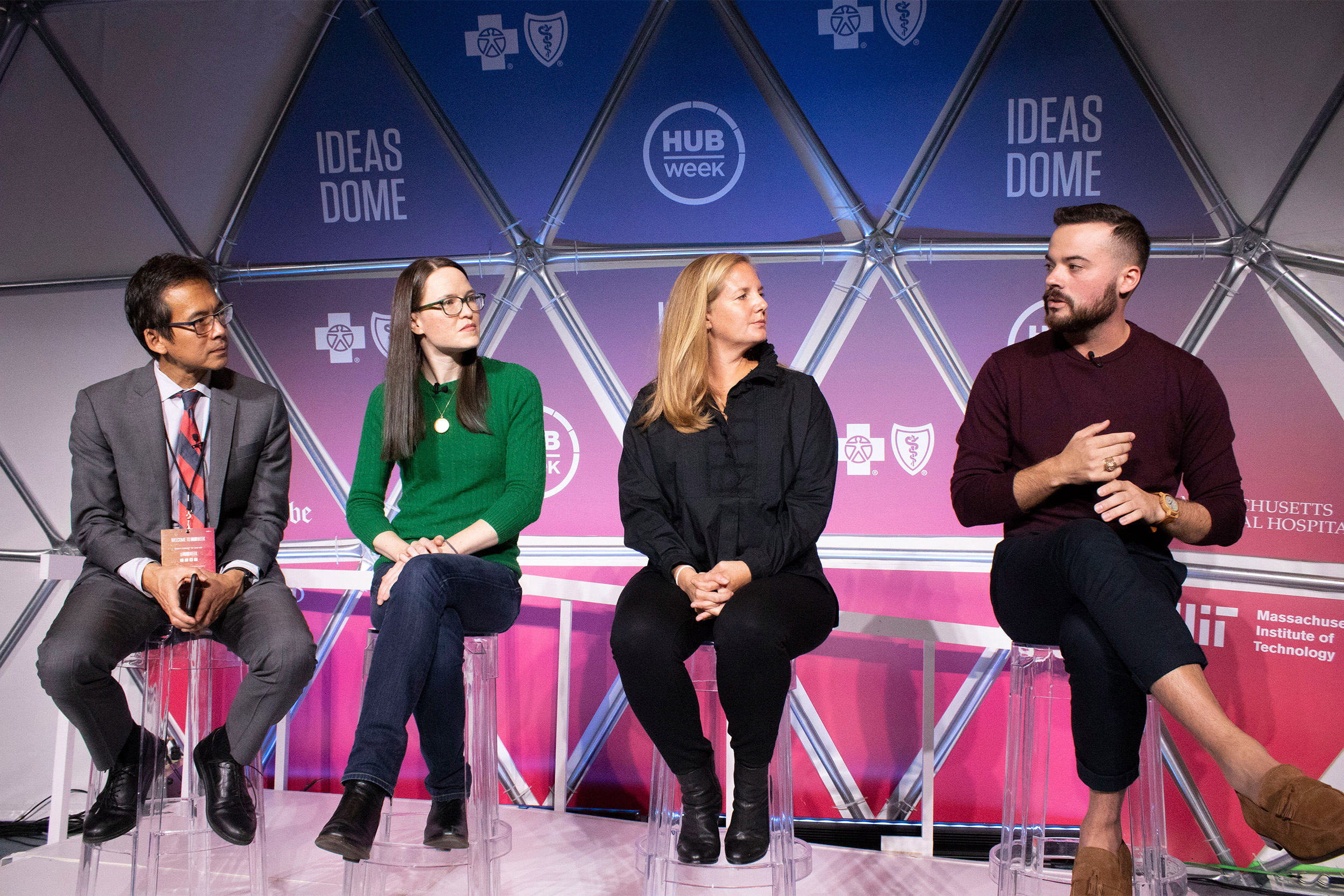
The panel included Archon Fung of Harvard (from left), Democracy Works CEO Kathryn Peters, Corley Kenna of Patagonia, and John Horton of Lyft. This year, Lyft is offering discounted rides to the polls, and partnering with nonprofits to offer free rides in underserved communities.
Sarah Grucza/Ash Center
Policy initiatives could help raise voting rates, Fung said, but changing civic culture is also key.
“How can we get companies and schools and other kinds of organizations to think that it’s part of their civic responsibility to encourage full participation?” he said. Fung added that we also need to change the idea of voting “from a chore to a celebration.”
As an example of what organizations can do, Fung cited the Kennedy School’s commitment this year to get 90 percent of its voting-eligible students to register.
More like this
Kathryn Peters, co-founder and chief operating officer of Democracy Works, discussed her organization’s TurboVote web platform, which seeks to increase voting by providing people with voting information specific to their geographic area.
Because voting procedures vary across the country, Peters said, “With TurboVote, we’ve built effectively a voter concierge that lets anyone walk through and find the process to be as understandable and welcoming as possible.”
Peters said she has seen the value of online relationships in spurring people to vote.
“Snapchat deciding that they were going to be excited about voting this year is possibly one of the biggest stories in the 18- to 23-[year-old] new-voter demographic that I can think of,” she said.
Corley Kenna, senior director of Global Communications and Public Relations for Patagonia, described the outdoor retailer’s efforts to promote voting.
“Our company culture is a lot about being responsible stewards of our resources but also being responsible citizens and … one of the most important responsibilities that we have in our society is voting,” Kenna said. This election season, “We are talking to our community about how democracy requires showing up.”
As it did in 2016, the company is also closing its stores and giving employees Election Day off to send the message that “it’s more important to vote than to shop” that day, Kenna said. It also helped launch a campaign in which 300 companies have pledged policies that ensure that employees have time to vote.
John Horton, senior manager of East Coast community affairs for Lyft, outlined how the ride-hailing company became involved in boosting voter turnout.
“We’re all about solving problems,” he said, and since lack of transportation can be a barrier to voting, “we thought, here is a problem we can easily attack.”
Lyft this year is offering discounted rides to the polls, and partnering with nonprofits to offer free rides in underserved communities. The company is also closing part of its corporate offices on Election Day, and has registered 16,000 new voters.
Fung asked his fellow panelists what strategy they would advocate to meet the 80 percent voting goal. Peters said she would support Civic Nation’s #VoteTogether program, which throws parties during election seasons.
“That idea of having it festive, of civics not being dour, is really important,” said Peters, who would also like other states “to adopt a voting system that looks like Colorado,” which combines mail-in balloting and other measures to make voting easy.
Horton said educating people about where and when to vote, and setting uniform election dates, would be important.
Kenna said she would like to see a uniform, mail-in ballot system across the country and to make Election Day a national holiday where “we celebrate our democracy and the fact that it works when we vote.”
